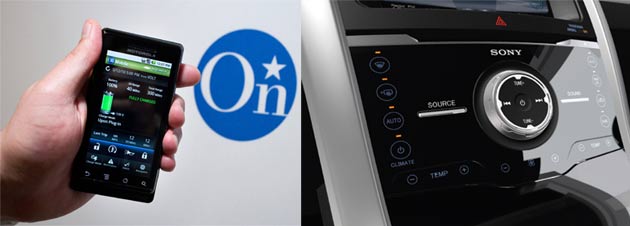More tech in your car? Oh, that’s inevitable. But automakers are trying to figure out the best way to implement it. There are two main architectures currently; tethered and embedded. Ford’s SYNC is an example of a tethered tech-integration system that uses Bluetooth to connect to mobile devices consumers already own and carry with them. General Motors’ OnStar system is an embedded setup that builds the technology into the car. Going forward, the consensus seems to be that we’re going to see systems that combine elements of both.
A tethered system is typically less costly than an embedded alternative, and it works with equipment you already own and know how to use. Systems like Sync can extend the functionality of your gear and is an attractive option to tech-savvy consumers. The lower cost makes it possible to proliferate these kind of features into more models, instead of just being a high-end feature. However, embedded systems offer advantages of their own. With communications hardware built in to the vehicle, performance is more reliable, and safety can be enhanced by tying in to the vehicle’s crash sensors and stability control to automatically call for help if it detects a severe accident.
True to the cliche, it seems that the young’ins are more comfortable with tethered systems, while older generations prefer embedded systems. OnStar is already starting to do this, opening up the system in Chevrolet Volt applications with a mobile app that lets drivers connect to their car even when they’re away from it. The future likely holds a system that combines aspects of both, enhancing safety, beating back obsolescence and drawing on the strength of each technology to deliver the best experience as cars continue to become more sophisticated.
Source: AutoObserver
